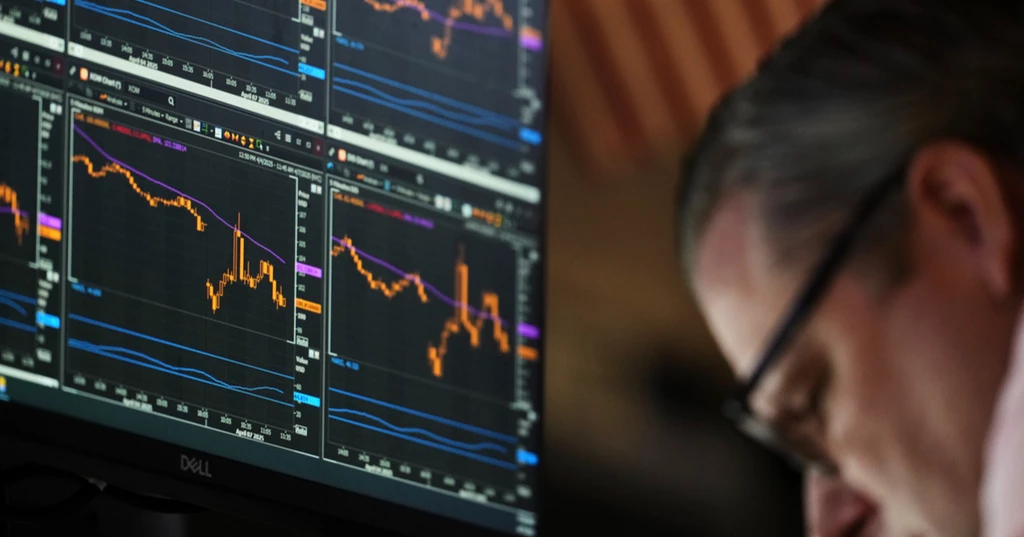Asian markets opened higher on Tuesday, with Japan’s Nikkei 225 benchmark surging more than 6% after a nearly 8% drop the previous day.
This recovery followed a volatile session on Wall Street, where U.S. stocks fluctuated following President Donald Trump’s warning of increased tariffs.
On Tuesday morning, China’s Commerce Ministry declared it would “fight to the end” and take unspecified countermeasures against the U.S. in response to Trump’s threat of an additional 50% tariff on Chinese imports.
By late morning in Tokyo, the Nikkei 225 had risen 6.5% to 33,148.52.
Hong Kong also regained some losses but not nearly enough to recover from its 13.2% plunge on Monday, marking the worst performance of the Hang Seng index since the 1997 Asian financial crisis. The Hang Seng rose 1.7% to 20,163.97, while the Shanghai Composite increased by 0.8% to 3,121.72.
South Korea’s Kospi climbed 1.6% to 2,364.22, and the S&P/ASX 200 also rose 1.6%, reaching 7,462.60. Markets in New Zealand and Australia saw similar gains.
On Monday, the S&P 500 fell 0.2%, as investors anxiously awaited Trump’s next moves in the trade conflict. If other countries agree to trade deals, he could reduce tariffs and avoid a potential recession, but if tariffs persist, stock prices may continue to drop.
The Dow Jones Industrial Average dropped 349 points (0.9%), while the Nasdaq composite rose by 0.1%.
All three indexes began the day sharply lower, with the Dow plummeting by as much as 1,700 points due to significant losses elsewhere globally. However, it suddenly surged by nearly 900 points by late morning. The S&P 500 recovered from a 4.7% loss to climb 3.4%, marking its biggest jump in years.
This sharp rise followed a false rumor that Trump was considering a 90-day break from his tariffs, which was quickly debunked by the White House on X as “fake news.” The fact that such a rumor could cause a trillion-dollar market shift illustrates investors’ hopes that Trump might ease up on the tariffs.
Stocks soon reversed direction, and Trump reaffirmed his stance, indicating that he may escalate tariffs after China retaliated with its own set of tariffs on U.S. goods last week.
Trump’s tariffs challenge globalization, which has shaped the current world economy by reducing prices but also relocating manufacturing jobs. He has expressed a desire to bring factory jobs back to the U.S., a process that may take years. Additionally, Trump aims to reduce trade deficits, but it remains unclear how much room for negotiation exists with the U.S. and its trade partners.
The fluctuations in stock indexes on Monday were partly due to investor hopes that ongoing negotiations might prevent the full implementation of these tariffs.
One certainty on Monday was the global financial strain following Trump’s tariff announcement on his April 2 “Liberation Day.”
Oil prices also dropped due to concerns that a global economy weakened by trade barriers will lead to reduced demand for fuel. U.S. crude oil fell below $60 per barrel on Monday for the first time since 2021 but rose by 62 cents to $61.32 per barrel early Tuesday.
Brent crude, the international benchmark, increased by 70 cents to $64.91 per barrel.
In currency markets, the U.S. dollar rose to 147.32 Japanese yen from 147.71 yen, while the euro fell to $1.0983 from $1.0917.
Gold prices increased by $38, reaching $3,011.60 per ounce, and Bitcoin gained 2.1%, rising to $80,081.17. On Monday, Bitcoin had dropped below $79,000, down from its January peak of over $100,000.


